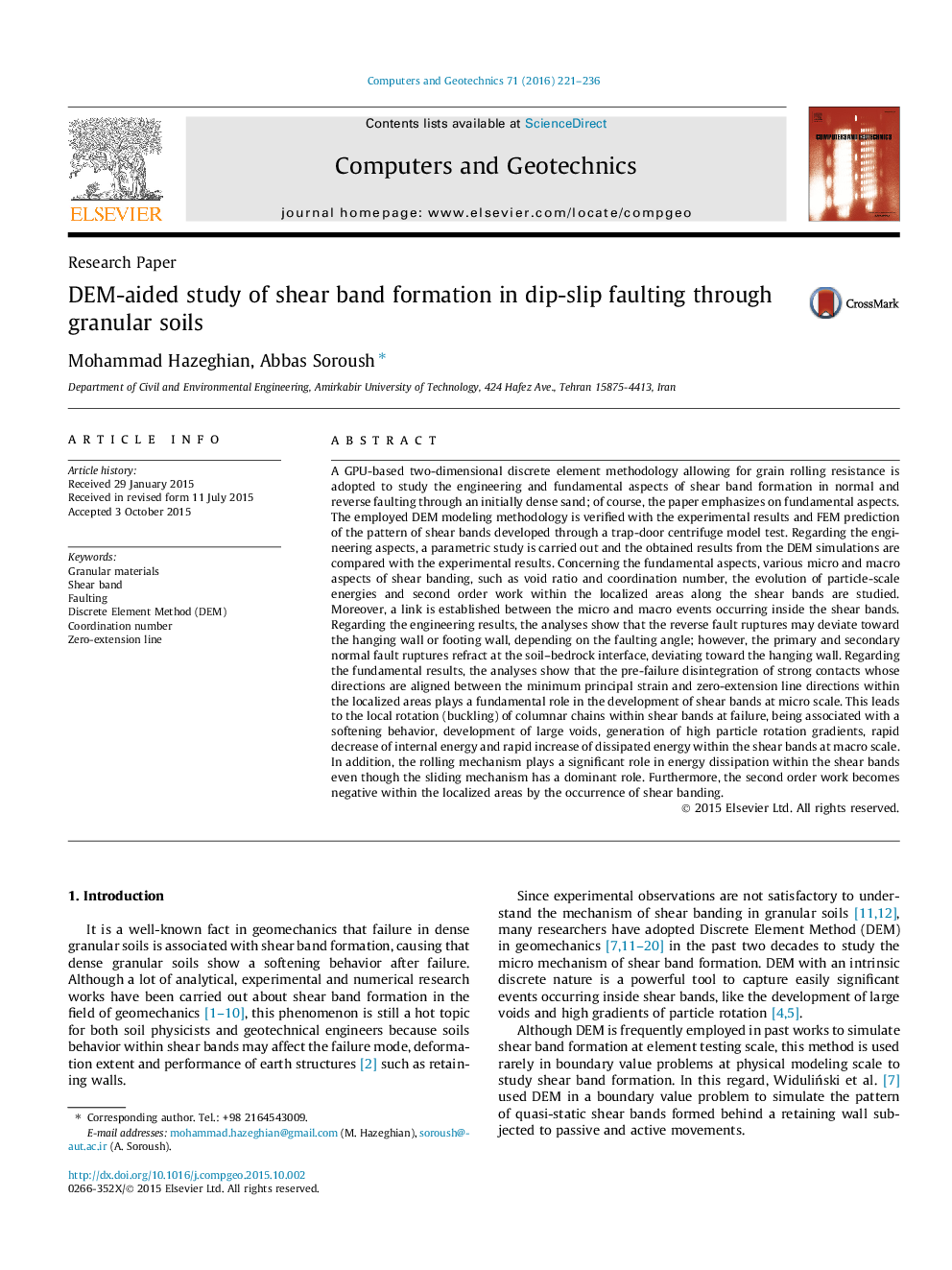| کد مقاله | کد نشریه | سال انتشار | مقاله انگلیسی | نسخه تمام متن |
|---|---|---|---|---|
| 6710590 | 503316 | 2016 | 16 صفحه PDF | دانلود رایگان |
عنوان انگلیسی مقاله ISI
DEM-aided study of shear band formation in dip-slip faulting through granular soils
دانلود مقاله + سفارش ترجمه
دانلود مقاله ISI انگلیسی
رایگان برای ایرانیان
کلمات کلیدی
موضوعات مرتبط
مهندسی و علوم پایه
مهندسی کامپیوتر
نرم افزارهای علوم کامپیوتر
پیش نمایش صفحه اول مقاله

چکیده انگلیسی
A GPU-based two-dimensional discrete element methodology allowing for grain rolling resistance is adopted to study the engineering and fundamental aspects of shear band formation in normal and reverse faulting through an initially dense sand; of course, the paper emphasizes on fundamental aspects. The employed DEM modeling methodology is verified with the experimental results and FEM prediction of the pattern of shear bands developed through a trap-door centrifuge model test. Regarding the engineering aspects, a parametric study is carried out and the obtained results from the DEM simulations are compared with the experimental results. Concerning the fundamental aspects, various micro and macro aspects of shear banding, such as void ratio and coordination number, the evolution of particle-scale energies and second order work within the localized areas along the shear bands are studied. Moreover, a link is established between the micro and macro events occurring inside the shear bands. Regarding the engineering results, the analyses show that the reverse fault ruptures may deviate toward the hanging wall or footing wall, depending on the faulting angle; however, the primary and secondary normal fault ruptures refract at the soil-bedrock interface, deviating toward the hanging wall. Regarding the fundamental results, the analyses show that the pre-failure disintegration of strong contacts whose directions are aligned between the minimum principal strain and zero-extension line directions within the localized areas plays a fundamental role in the development of shear bands at micro scale. This leads to the local rotation (buckling) of columnar chains within shear bands at failure, being associated with a softening behavior, development of large voids, generation of high particle rotation gradients, rapid decrease of internal energy and rapid increase of dissipated energy within the shear bands at macro scale. In addition, the rolling mechanism plays a significant role in energy dissipation within the shear bands even though the sliding mechanism has a dominant role. Furthermore, the second order work becomes negative within the localized areas by the occurrence of shear banding.
ناشر
Database: Elsevier - ScienceDirect (ساینس دایرکت)
Journal: Computers and Geotechnics - Volume 71, January 2016, Pages 221-236
Journal: Computers and Geotechnics - Volume 71, January 2016, Pages 221-236
نویسندگان
Mohammad Hazeghian, Abbas Soroush,